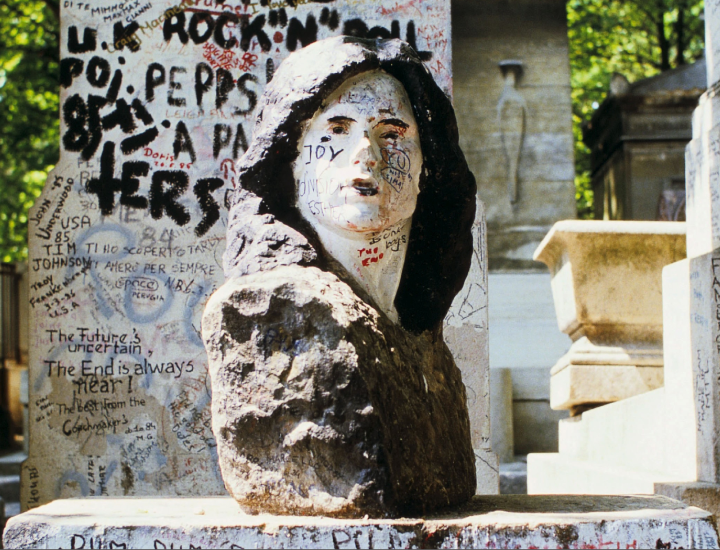Paris — After nearly four decades of mystery and speculation, the missing bust of Jim Morrison, which once adorned the Doors frontman’s grave at Père Lachaise Cemetery in Paris, has been recovered by French authorities. The statue, which vanished in 1988 under mysterious circumstances, resurfaced unexpectedly during a police raid linked to an unrelated fraud investigation.
The bronze bust, created by Croatian sculptor Mladen Mikulin, was installed in 1981 to honor the American rock icon, whose poetic lyrics and electric stage presence made him a defining figure of 1960s counterculture. Morrison, who died in Paris in 1971 at the age of 27, was buried in the famed cemetery alongside other cultural luminaries like Oscar Wilde and Édith Piaf. His grave quickly became a pilgrimage site for fans worldwide.
The statue’s disappearance in the late ’80s left fans and officials baffled, with speculation ranging from vandalism to underground art theft. Over time, the gravesite became a canvas for graffiti and mementos, but the absence of the bust was a long-standing sore point for many admirers.
French police confirmed that the bust was recovered while searching a private property in connection with a financial fraud case. Covered in layers of graffiti and wear, the piece is undergoing assessment to confirm its authenticity and condition. Authorities have not yet disclosed the identity of the individual in possession of the statue, nor whether they face charges related to its disappearance.
Mladen Mikulin, now in his eighties, had long campaigned for the return of his work, even proposing to reinstall a new version in recent years. “It’s part of history,” he said in a past interview. “It was meant to honor Morrison’s legacy, not vanish into the shadows.”
The bust’s recovery marks a significant moment for fans of Jim Morrison and The Doors, as well as for art and music history. Discussions are reportedly underway between Parisian officials and the Morrison estate regarding whether the original bust will be returned to its place at the gravesite or displayed elsewhere for preservation.
For many, its return offers closure to a decades-long mystery and a renewed opportunity to celebrate Morrison’s life and music in a more complete and dignified way.




